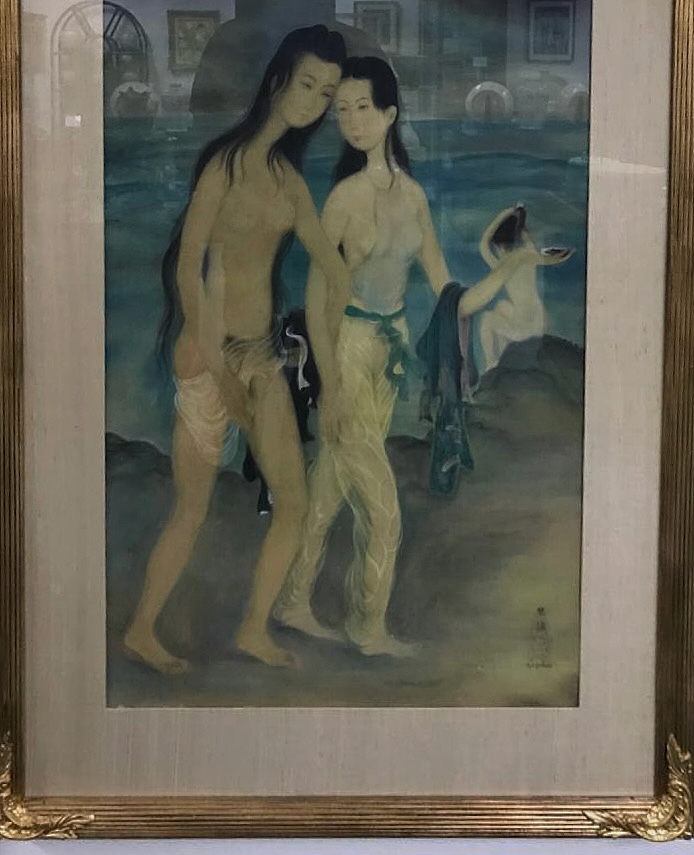
Le Pho (Vietnam, 1907-2001)
Le Bain de Mer (The Bath at Sea)
signed in Chinese and signed 'Le pho' (lower right); titled 'Le bain de mer' (on the reverse)
ink and gouache on silk laid on paper
88 x 56.5 cm. (34 5/8 x 22 1/4 in.)
Painted circa. 1938
one seal of the artist
Provenance
Anon. Sale, Christie’s Hong Kong, 26 October 2003, lot 45
Acquired from the above sale by the present owner
Collection of Mr Tuan H Pham, California, USA
Christie's Hong Kong, 26 May 2019


“Erupted from one water
Like a young girl alone
In the midst of her naked dresses
Like a young girl naked
In the hands that pray for her
I salute you”
Paul Eluard (1895-1952)
Erupted
To be a successful revolutionary it certainly takes conviction but also a great deal of seduction. A real artist is by definition a true transgressor: the painter, Le Pho, in this astonishing painting, perfectly demonstrates it. What makes this painting unique is that it illustrates perfectly why this mandarin's son, the Empire's column and a Viceroy of Tonkin, chose to challenge and measure his talent in France, then the centre par excellence of for any artist wanting to build his or her work. To paint is freedom for oneself and all the others.
For Le Pho and many other intellectuals at the time, the Vietnamese women must find freedom by getting away from the ruled modesty so characteristic to the stricter confines and rules of traditional Tonkinese society. Much like the depictions of these women in the painting, Le Pho challenges and breaks traditional boundaries.
The painter sets the scene on the sea side. Beyond the nakedness, it is the undressing that is interesting. The two women on the forefront, walking arm in arm, have let their hair down out of the traditional bun. The classical ao dai is replaced by clothing so sheer that the contours of the naked body are revealed but yet still covers the more private areas of the body, with a modicum of modesty. One of the ladies holds with grace an oyster in her left hand as if Le Pho wanted to suggest ladies in their posture of pearldivers to deliver a subliminal message.
A third naked lady appears at the same level in the composition even though she is set further away sitting on the edge of the water and pulling her hair back. Her presence pulls away the attention of the viewer but sets a beach scene more public to emphasize the liberation. The black through the sky and the water adds to the intensity of the scene and their choice to be free near the water.
Here Le Pho offers with his artistic brilliance a prophetic, but also a militant masterpiece in a large format on silk not often seen. The theme is supported by darker tones then what he normally uses in his compositions giving strength to the hidden message of the expressive and new ways in which the artist approaches the world.
Jean-François Hubert
Senior Expert, Vietnamese Art










